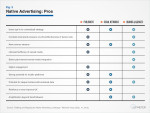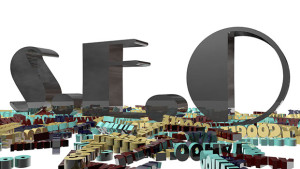Businesses are starting to integrate advertising with digital content. Sponsored content on Buzzfeed, for example, is a form of this new advertising called “native advertising”. Although the term native advertising is new, the type of advertising is not. Newspapers have had paid advertising that reads like news stories for years. The only difference is now the idea has migrated online.
Native advertising, though big, is still not very well known. Even though this type of advertising is 53% more likely to bring you leads, around 49% of customers and marketers have no idea about this type of advertising. According to BI, it is expected to 7.9 billion this year, and increase by over around 200% by 2018 reaching 21 billion.
A great feature of native advertising is that you are selling yourself. You become the story. Whether you are the main business, most important or service, or the expert professional, the story revolves around you. Even though you are likely to pay more for native advertising, traditional advertising is not catching people to buy.
The bottom line is readers trust you more and your products are more valuable. You have a new way to appeal to readers unlike banner or traditional display advertising. In fact, according to research, 54 percent of publishers say they will get increased revenue streams from sponsored content and native advertising over the next two years.
Still, companies need to understand how to use native advertising effectively. Publishers and brands are having trouble comprehending the native spectrum of advertising options. Companies are looking to find the balance that exists between a classic banner ad and a fully native one.To help you learn more about what types of advertising is between classic banner and fully native, here is a brief guide.
- Tourist Ad — This is a step up from the classic banner. The ads include super banners or those that are super-size banner ads, multifaceted ads, those with useful content, and those that allow comments or voting.
- Resident Ads — These move closer to native from Tourist Ad. They integrate more completely into a website. They imitate that the specific piece is part of the site’s original content. Their characteristics include they can be changed to look like the site’s core content layout but they are served by a third-party company; they use the space between paragraphs or at the bottom of articles for their location; and they have both local and third-party content.
- Citizen Ads — Take Resident Ads that use camouflage and expands on that trait by embedding more fully. Citizen ads look like the site with the same style. They are part of the user’s core browsing needs. They are shown as part of the content experience.
- True Native Ads — These give you the best of both worlds. You get content that is clearly sponsored but is easily engaging. They share their function with non-ads, look the same as other content on the site, and are included when people are searching.
Why Do People Use Native Advertising?
Native ads perform better than banner ads in key matrices, such as click through rate. The difference is staggering. However, they aren’t doing that much better than regular advertising. They are too new for media planners and marketers to justify their use. Companies can benefit from the divergence between impact and pricing of the ads. Right now, there is a significant inefficiency in the market. You might as well exploit the inefficiency until the publishers get smart and fix it. For example, you can use native advertising on your sale page to help your visitors know more about items being available at discounted rated. And if you have the budget, you can turn to outside sources like BuzzFeed to advertise what you have to offer.
How to Use Native Advertising Successfully
The most successful businesses are those that use a strategic combination of both native advertising and traditional advertising. Using both is most effective for online and offline areas. When people read about an interesting topic written by a local expert and the expert brand is reinforced through display and banner advertising, it allows people to remember your brand more completely. People have a strong desire to be associated with powerful and respected people. If you are featured prominently as an expert in the native ad, you become that person of power. They people will want to associate themselves with you. A very good example would be Dunkin Donuts advertising through BuzzFeed using the ‘Which Donut Are You?’ campaign. It was a massive hit and a good example for one and all. Other examples include Intel’s ‘15 Things We Did At School That Future Students Will Never Understand’, an inconspicuous way to promote Intel.
If you are a company trying to figure out native advertising, you need only think about how advertising is used and you can see how it is evolving. You will want to learn all you can about native advertising so you can be successful in capturing readers to your brand, products and services.
We at Michael Words can help you advertise your products better online. Get in touch with us today to know how we can help give your business a boost with the help of right content strategy.


